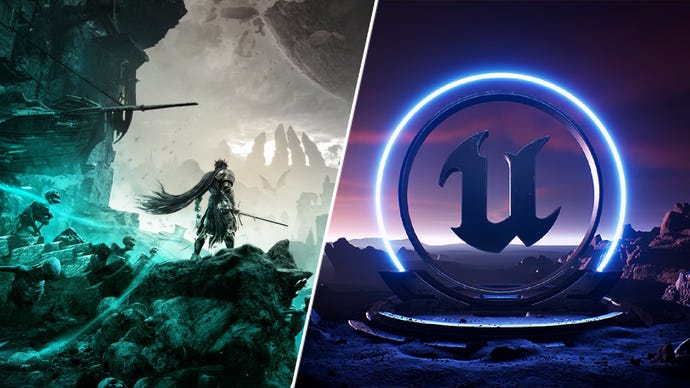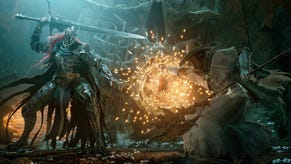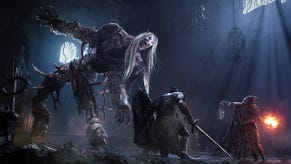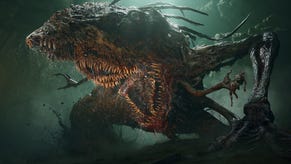Lords of the Fallen is the first game to sell me on Unreal Engine 5
Lords of the Fallen looks like those fake UE5 game remakes that are all over YouTube. Except it’s a real game that you can actually play.
I didn’t know quite what to expect from Lords of the Fallen. This is also a sentence I know I must’ve uttered ten years ago, prior to the release of Lords of the Fallen (2014). The two games looked visually impressive in trailers, and you could tell it was a point of pride for the developers of both games to really show how their work outshines its inspirations – and plenty of games available at the time.
But the original game ended up being, well, not very fun. It fell into many of the same pitfalls Souls-likes continue to fall into to this day. It boiled down to only having a surface-level understanding of what makes the various components of FromSoftware’s games work in unison.
This has not been my experience with the new Lords of the Fallen, and it was genuinely surprising to see how well the game learns from the greats while forging its own path. I am not here to talk about how well it plays, though (you’ll get more from us on that soon).
What I want to do is gush over just how damn good-looking Lords of the Fallen is. I’ve played/seen plenty of visually-stunning games in my time. Cyberpunk 2077 with path tracing, Metro Exodus with entirely RT-based rendering, etc. I might have shed a tear the first time I came across a glass window in Control (with RT on).
But there’s just something about seeing one of favourite genres in games be realised with the kind of next-gen tech that put the CG announcement trailers of years’ past to shame. I’m somehow still not tired of seeing medieval monolithes and Gothic structures for the hundredth time, and it’s that familiarity that can really get you to appreciate how far we’ve come.
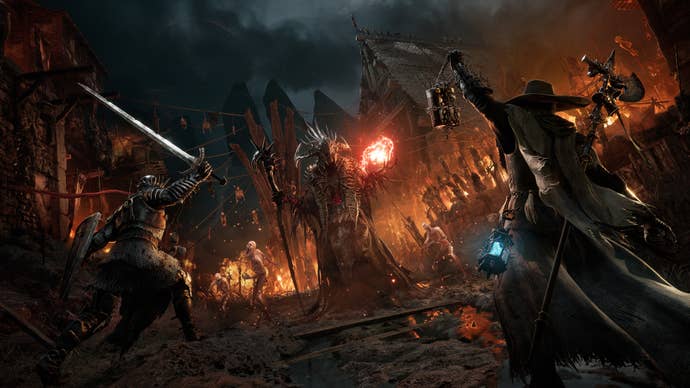
Lords of the Fallen could easily pass for a 2023 remake of Dark Souls, and I’d like to attribute some of that to developer Hexworks’ use of Unreal Engine 5. Lighting in the game is the most immediately noticeable aspect of its visual makeup. There’s a natural, believable look to outdoor areas, and a claustrophobic feel to its many dungeons.
Global illumination is the key player here, which can consistently light the various materials in a realistic manner. Lumen, Unreal Engine 5’s real-time lighting system, works quite well for a game like this, but it’s also aided by physically-based rendering and accurate material reproduction.
Basically: metal, copplestone, rocks, cloth and anything with a texture looks like a 3D scan of the real thing, being lit in the way it would be in the real world.
There’s also another layer to that. Lords of the Fallen renders two versions of the world at all times. Axiom, the world of the living, is where you’ll spend most of your time. That’s the European fantasy one you expect. Then there’s the underworld, Umbral, which exists on the same plane. By using a lamp, you not only get to peer through the other side – in real-time – you can also traverse between worlds.
The lighting in Umbral gains a colder, more faded look to signify the hallowed nature of this world of the dead. But the game never loses its visual prowess, even when colours are muted and the atmosphere makes everything feel hostile.
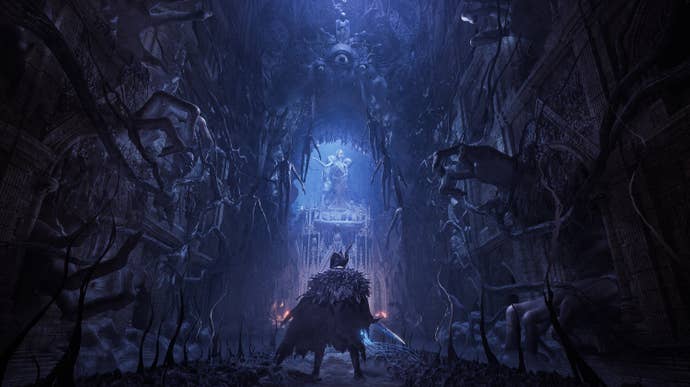
Nanite is the other major Unreal Engine 5 tech that elevates the entire presentation. Naninte can produce textures at incredibly high resolutions, without requiring the massive amount of memory high-res textures typically need.
It also handles draw distances and level of detail changes much more gracefully than standard lod systems. Detail at a distance in Lords of the Fallen is particularly impressive, no matter how far away you get from major landmarks. It makes this world believable, in a similar way to how The Mandalorian and other modern TV productions use animated backgrounds projected by LEDs in place of green screens. You never feel that actors are standing in front of a fake backdrop, because it all looks cohesive enough to easily convince you it’s a real set. The same is true for every backdrop I’ve come across in Lords of the Fallen.
The way Nanite manages memory is particularly useful when you have two versions of the world running simultaneously. I couldn’t notice any loss of detail when traversing between the realms. Indeed, you could even say that Umbral pushes density further with all of its horrific scenery layered on top of every inch of the world.
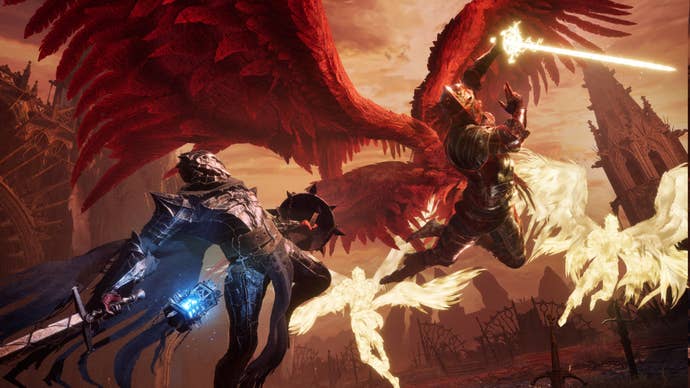
While all of that would make a game look stellar, it’s the way things animate in Lords of the Fallen that really sells the fantasy. Cloth physics, in particular, deserve a notable mention – everything from banners, cloaks, to various bits of clothing, and adornments on weapons move very convincingly.
There’s a shockwave that protects the player when they die and spawn in Umbral, which knocks enemies and objects back, and I could genuinely see it being a favourite of the team during development. It’s strong enough to clear the area around you, and you get to see how it affects heavily-armoured knights as well as the sneaky, robe-clad sorcerers.
The same goes for destructive objects in the world, too. Pretty much anything that looks like it can be destroyed, can be rolled into/hit etc., and it will react to the environment - including shattering into a thousand pieces anytime that shockwave is triggered.
Even something as trivial (by comparison) as the character creator, makes good use of Unreal Engine’s very convincing humans. Skin is well-shaded, and the creator tool seamlessly morphs between body types, face/bone structures to create a sort of clay, albeit with very convincing skin and faces.
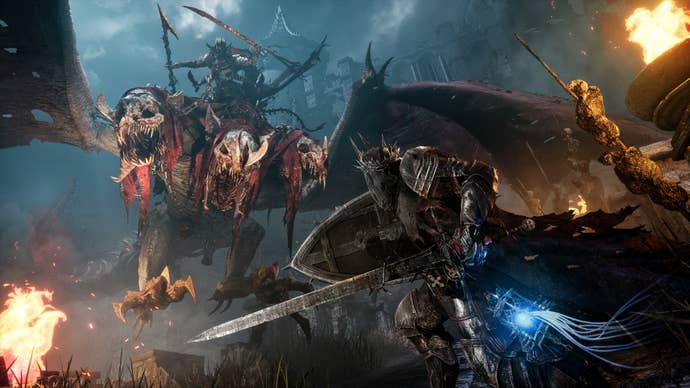
I can completely see why CD Projekt Red is making the next Witcher on Unreal Engine 5. Even after the studio seemingly mastered its RedEngine with the evolved Cyberpunk 2077 – including implementing industry-leading innovations like real-time ray tracing, path tracing, and ray reconstruction, there is a sense that the developer fought to get it to where it is.
As much as one might lament never seeing what that engine could’ve done for The Witcher 4, the similarities in setting and genre between Lords of the Fallen and The Witcher demonstrate that it was the right decision. Many of Unreal Engine 5’s features are backed-in, and could save developers years of time creating their own solutions. If Lords of the Fallen is the level of fidelity we can expect from next-gen action RPGs, I’m all in.
